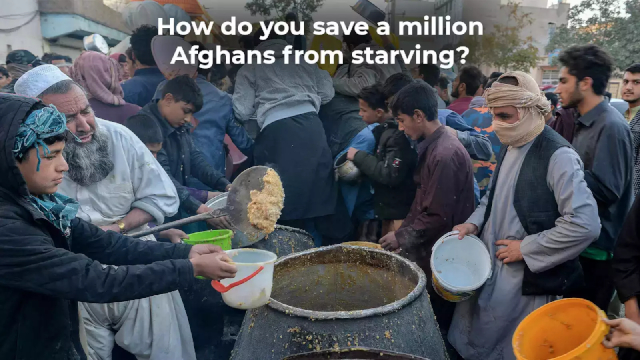We’ve told you, from time to time this autumn, about rising food prices and the reasons for the phenomenon. That’s not news. But the global picture is bad and getting worse, and – while Canada, the U.S. and most of Europe are handling the situation well – other countries are facing disaster…
 The Times Of India asks the burning question: The figure is now more like three million.
The Times Of India asks the burning question: The figure is now more like three million.
We all know that food prices are up – as much as 20 percent for some items. And we’ve been told to expect high prices to persist until next April or longer – here in Canada, at least. But we’ve had only minimal shortages. At most, we’ve had to change our brand preference for some products temporarily while the supply chain catches up with demand.
Explosive price increases worldwide
The U.N.’s World Food and Agriculture Organization (FAO) reported yesterday that the overall cost of food has increased by more than 30 percent overall worldwide over the past year, highlighted by an alarming 10 percent increase this past October alone. Grain prices led the way with an annual price hike of 22 percent. Wheat in particular – a major player on the global food stage – is up 44 percent on the world markets.
Folks in producing countries aren’t hurting nearly as much as those in importing countries. Those in poorer countries are suffering shortages – severe in some cases. And nations with large populations to feed are playing a numbers game, with winter coming on.
Global causes trigger global consequences
Among the factors contributing to food supply irregularities in North America:
- Container transport ships are sitting full but unattended off the major west cost ports. Port staff won’t come in to work, fearing COVID-19 infection. The additional tragedy there is, a lot of that food is perishable, and it is already past the point that it can safely be eaten.
- The reverse is also true: Food exporting countries are having trouble getting ships loaded, for the same reason.
- The continuing shortage of truck drivers to move food from the warehouses to the stores. Some trucking companies are reportedly offering huge signing bonuses for new drivers, and even opening up their own driver training programs to get new drivers into the industry.
- The Omicron COVID-19 variant is triggering another round of tightened safety protocols, and transportation disruptions are getting worse as a result.
But on a larger scale:
- Poor harvests. “In the case of cereals [grains], we’re facing a situation where one could say it’s climate change which is ultimately causing falling production,” Peter Batt, an agribusiness expert at Curtin Business School told the BBC. “We’ve had pretty bad years [of harvests] in a lot of places.”
- As anyone who drives a car will tell you, fuel prices are up. This impacts farm operations as well as the transport of food by truck, rail and ship.
- Fertilizer prices are also up dramatically from a year ago. Some growers can’t afford to plant crops at all – crops that would fail for lack of fertilizer.
China facing panic, disaster
China has always had a large, dispersed population, and food security has always been an issue for the central government. Now with more than a billion people, China faces what may be its worst food crisis yet. And all because the central government issued an advisory – innocuous on its face – for citizens to make sure they had ‘adequate provisions’ in store to ensure they wouldn’t run short of food in the near term. But some folks took that to mean a food drought was imminent, and a wave of panic buying and hoarding washed over China. The result, ironically, has been a real widespread food shortage there. And new lockdowns and heightened safety protocols against the OMICRON COVID-019 variant are contributing to troubles getting food to stores.
The global picture
The FAO estimates that 45 million people in 43 countries worldwide are facing starvation. Three million people in Afghanistan alone. “Media reports from Afghanistan point to families reportedly being forced to sell their children in a desperate attempt to survive,” a new FAO situation overview reveals. There’s also been a surge in the number of attempts to adopt children out, and marry off girls much younger than we would consider appropriate, just to cut down on the number of hungry mouths (see photo, top of page) in some households.
What can we do?
The U.N. World Food Programme (WFP) says it’s already increased its spending on global starvation relief from (US)$6.6 billion to (US)$7 billion this year, and ‘traditional funding streams are being stretched.’
Of course we can all donate what we can to the WFP. But more to the point, is it time for Bill Gates and Warren Buffet and friends to open their vault and shell out a few billions of the money they’ve put into the Bill and Melinda Gates Foundation for just this sort of emergency?
~ Maggie J.

